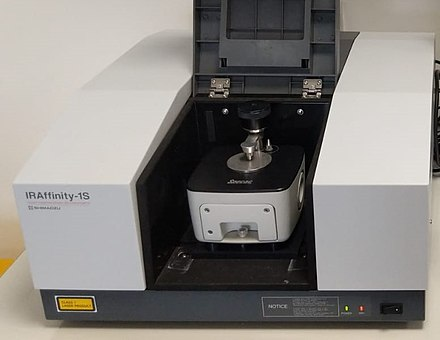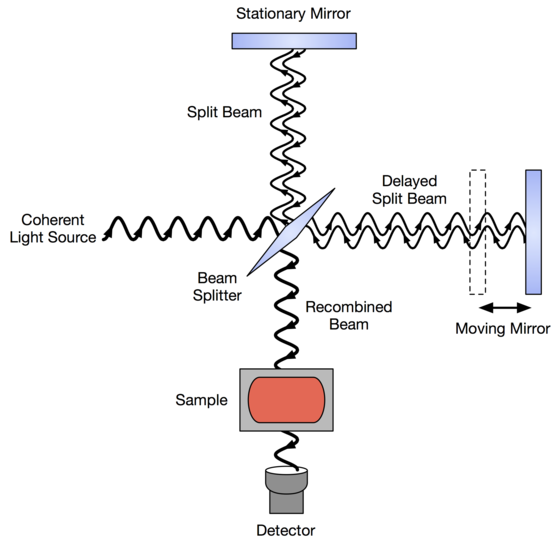- Published on
Fourier-transform infrared spectroscopy (FTIR)
- Authors

- Name
- Universal Lab
- @universallab
Table of Contents
Abstract
Almost all infrared spectrometers today are of the Fourier transform type. The main disadvantages of dispearsive instruments are slow scanning speed, low sensitivity and low resolution. Therefore, the dispersive instrument itself has great limitations.

Figure 1: An example of an FTIR spectrometer with an attenuated total reflectance (ATR) attachment.
Introduction
When doing the infrared spectroscopy (FTIR) test, the staff of Universallab learned from communication with many customers that many do not know much about the FTIR test. At present, almost all infrared spectrometers are of the Fourier transform type. The main disadvantages of dispersive instruments are slow scanning speed, low sensitivity and low resolution. Therefore, the dispersive instrument itself has great limitations. The light emitted by the light source of the Fourier transform infrared spectrometer is divided into two beams by the beam splitter, one beam reaches the moving mirror after reflection, and the other beam reaches the fixed mirror after transmission beamer. The moving mirror moves linearly at a constant speed, so the two beams split by the beam splitter form an optical path difference and interfere, and the interference light passes through the sample cell after the beam splitter converges and is then detected.

Advantages of FTIR
- The signal-to-noise ratio of the spectrum is greatly improved. FT-IR instruments use few optical elements, no slits and grating beam splitters, so the radiation intensity reaching the detector is high and the signal-to-noise ratio is high.
- Fourier transform infrared spectrometer measures all the frequency information at the same time in the whole scanning time, generally only about 1s, it can be used to measure the infrared spectrum of unstable substances. The dispersive infrared spectrometer can only observe a very narrow frequency range at any moment, and a complete scan usually takes 8s, 15s, 30s, etc.
- High wavelength accuracy (±0.01 cm⁻¹) and good reproducibility.
- High resolution.
Reference
- Wikipedia: Fourier transform infrared spectroscopy
- Themofischer product
- METTLER TOLEDO product
- Science direct topic: FTIR